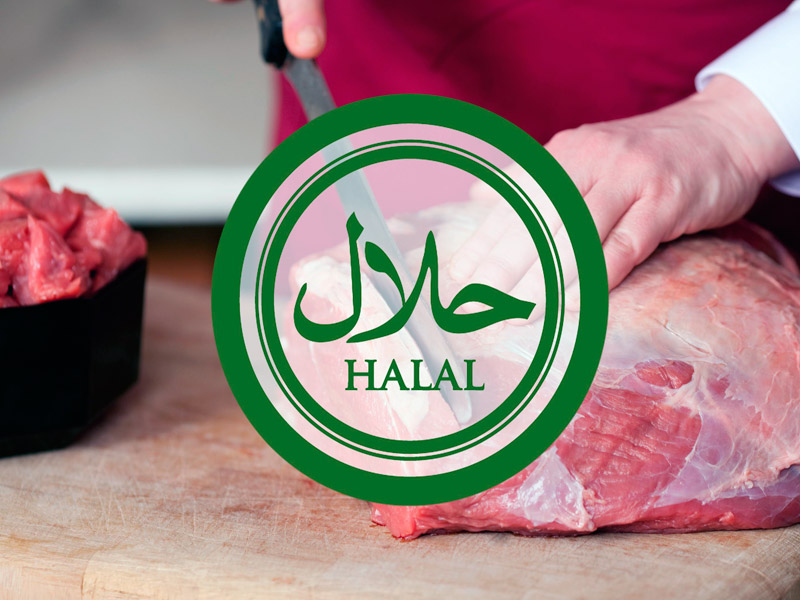In the delicate interplay of faith and ethics, the question of whether halal meat is considered animal cruelty is a significant topic of discussion. Halal, an Arabic term meaning ‘permissible’, refers specifically to what is allowed in Islamic dietary laws. The discussion surrounding halal meat often ignites passionate debate, particularly regarding its slaughter methods and the implications for animal welfare.
At the heart of the discussion lies the concept of ‘zabiha’, the ritual slaughter of animals for food. This method entails a swift, deep cut to the throat of the animal, which is intended to rapidly sever the major blood vessels. Proponents argue that this technique, when executed correctly, minimizes the suffering of the animal. Furthermore, it is necessitated by specific religious guidelines that dictate the treatment and handling of the animal prior to slaughter. These guidelines include ensuring the animal is healthy, providing adequate food and water, and establishing a calm environment. Such practices resonate with the ethical consideration of compassion towards living beings.
However, critics of halal slaughter often highlight that the animal does not receive stunning prior to the cut, which raises concerns about its awareness and potential pain during the process. In many Western societies, conventional farming practices generally require stunning to ensure that the animal is rendered unconscious before slaughter. Advocates for animal rights contend that any method which permits suffering is inherently cruel, regardless of intentions or religious significance. This dichotomy raises an evocative question: can religious practices justify methods perceived as cruel by modern ethical standards?
From a religious perspective, halal slaughter is rooted in theological doctrine. Muslims believe that food should be pure and that the process of obtaining meat must acknowledge the sanctity of life. The Quran prescribes methods that speak to the importance of respectful and humane treatment of animals. This spiritual lens radically shapes the understanding of halal slaughter, emphasizing the connection between faith, ethics, and animal welfare.
Furthermore, significant ethical concern arises surrounding the conditions of livestock rearing within industrial farming systems. A considerable number of halal meat products originate from mass production facilities that prioritize efficiency over animal welfare. Here, animals often endure restrictive confinement, lack of natural behavior, and various stressful environments, generating a complex dichotomy within the halal designation itself. The challenge lies in discerning the true ethical implications of consuming halal meat within an agricultural system that may not uphold the values espoused by the religious guidelines.
People engaged in the animal rights movements argue that the tangential relationship between religious observance and industrialized farming underscores a broader moral imperative. They advocate for more humane practices regardless of religious dictates, arguing that sentient beings possess inherent rights that supersede cultural beliefs. The contention here is not solely about slaughter techniques but also about the broader ethical responsibility of humans towards all creatures. As consumers become increasingly aware of animal welfare, many seek transparency in agricultural practices, ultimately pushing for advancements in the treatment of farmed animals.
It is in this context that we must explore alternative systems of halal meat production. Some producers advocate for free-range and pasture-raised livestock that emphasize humane treatment throughout the animal’s life. This method aligns not only with ethical standards but also with religious precepts, showcasing that adherent believers can pursue meat options that fortify their faith while upholding compassion for living beings. Chalets, or religious slaughterhouses, providing humane and ethical treatment may serve to bridge the gap between tradition and modern humane desires.
While the dialogue surrounding halal meat and animal cruelty requires nuance, it’s essential to recognize that subjective ethical perspectives are shaped by cultural backgrounds, personal beliefs, and societal contexts. As the global conversation on animal rights continues to evolve, ideologies surrounding halal meat are likely to adapt. This adaptability provides fertile ground for a revolution in understanding the intersection of religious conviction and ethical consumption.
Furthermore, as modern society grows more attuned to the implications of dietary choices, a unified approach may emerge—an ethos centered on compassion and ethical responsibility. The clamor for humane animal treatment transcends individual religious scripts, uniting diverse audiences under the single banner of animal welfare.
In conclusion, the discussion surrounding halal meat in the context of animal cruelty embodies much more than a binary debate on ethicality versus faith. It is a multifaceted conversation that invites individuals from all walks of life to examine their values, challenge longstanding practices, and advocate for change. Striking a balance between adherence to religious traditions and compassion for living beings may not be easy. However, it is undoubtedly a necessary pursuit in the quest for a more humane world where ethical considerations are as paramount as faith. Through dialogue and a commitment to transparency, a renewed understanding of halal practices can emerge, bolstering both religious adherence and the intrinsic right of animals to be treated with respect and dignity.







